Fewer but fiercer since the 90s
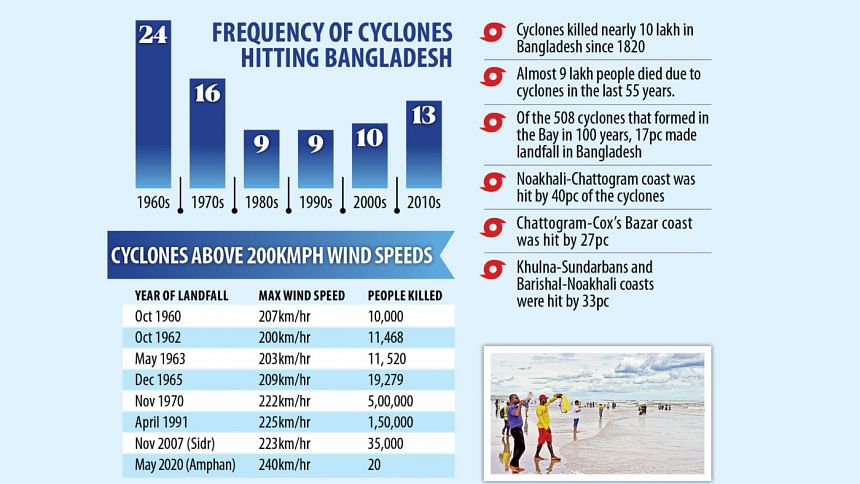
Though Bangladesh is experiencing fewer cyclones than in the 1960s, their intensity has increased, a recent study has found.
In the 1960s, the number of cyclones hitting the Bangladesh coast was 24, which came down to 13 in the 2010s, according to a study conducted by the Department of Environment with the help of the Center for Environmental and Geographic Information Services (CEGIS).
The country did not experience any super cyclones -- a cyclonic storm which at least packs wind speed of 222kmph -- between 1960 and 1989. However, between 1990 and 2020, at least three of them hit the coast.
"We had a general conception that the number of cyclones has been increasing in the Bay due to climate change. But it is the harshness or intensity of the cyclones that is increasing, not the numbers," said BUET Professor Rezaur Rahman after reviewing the study titled "Projection of Sea Level Rise and Development of Digital Elevation Models in Support of SLR Decision Making".
Analysing the data on cyclones that made landfall on the Bangladesh coast from 1960 to 2020, meteorologists found that 24 cyclones hit the country in the 60s, while only 16 hit the country in the next decade. There were nine cyclones each in the 80s and 90s, 10 in the 2000s, and 13 in the 2010s.
The analysis considered a weather event as a cyclone only if its wind speed was greater than or equal to 63kmph (34 knots).
From 1990 to 2020, there were three super cyclones – one in April 1991, Sidr in 2007 and Amphan in 2020.
Of the around 80 tropical cyclones that form across the world's waters, 5.5 percent form in the Bay of Bengal. Around 17 percent of the 508 cyclones that formed in the Bay over the last century have made landfalls in Bangladesh.
Bangladesh is particularly vulnerable to tropical cyclones which usually from late April to early November.
The formation of cyclones largely depends on sea surface temperatures reaching 26-27 degrees Celsius.
From 1951 to 1987, the temperature had been on a constant rise, increasing the intensity of cyclones, the study said.
The devastating impacts of cyclones are measured not only by the storm's severity but also by the extent of loss and damage to human life and property.
The cyclones of 1970 and 1991 caused high waves leading to the flooding of the country's coastal regions and causing the deaths of over 500,000 and 138,000 people respectively.
Sidr hit Bangladesh in 2007 with heavy rains, strong winds and storm surge, resulting in the death of around 3,000 people and damage to property worth around $450 million, according to reports.
Speaking to The Daily Star, Professor Emeritus Ainun Nishat of BRAC University and a leading climate expert, said though the number of cyclones has been decreasing, the sea surface temperature is on the rise and so, many cyclone-like weather events are taking place in the Bay.
"While we can't avoid cyclones, we can take precautionary measures like building our embankments properly. Being well prepared will help reduce the catastrophic impacts of cyclones," he added.

 For all latest news, follow The Daily Star's Google News channel.
For all latest news, follow The Daily Star's Google News channel. 


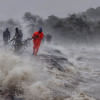
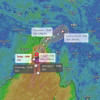
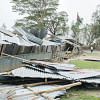
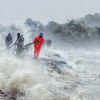


Comments